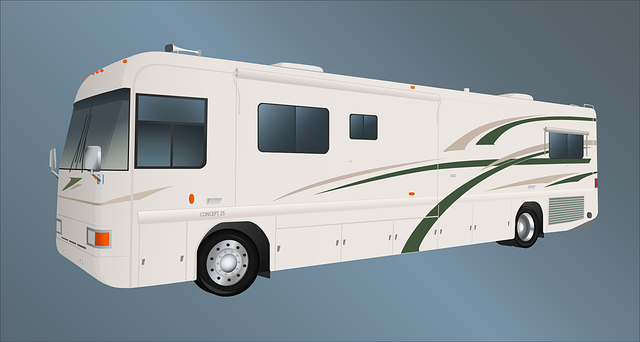When managing RV battery performance for long trips, it's crucial to understand the types of batteries available and their maintenance requirements. Deep-cycle batteries like AGM or gel cell are recommended due to their high tolerance for charge and discharge cycles, offering longer lifespans compared to lead-acid options. Proper care, including regular voltage monitoring, correct charging practices, and storing at a partial or full charge when not in use, can significantly extend the life of these batteries. To avoid overcharging or undercharging in varying climates, use intelligent chargers with temperature detection capabilities. Frequent deep cycling should be minimized to prevent battery wear. Maintain optimal temperatures for your RV battery by storing it at room temperature and shielding it from extreme conditions. For lead-acid batteries, regularly check and maintain water levels, while lithium or AGM batteries, which are maintenance-free, should be installed correctly and monitored for overheating. Employ a battery maintenance device with automatic charging top-offs to ensure full charge without overcharging. Additionally, integrating solar panels, high-power inverters with pure sine wave output, and battery monitors can enhance your RV's energy system, allowing for reliable off-grid travel experiences over extended periods. Proper integration and maintenance of these components are key to maintaining the system's optimal performance and ensuring your RV adventures are powered without interruption.
Embarking on an RV adventure means relying on your vehicle’s power systems to keep you connected. Ensuring your RV battery performs optimally for extended trips is crucial for comfort and safety. This article delves into the intricacies of various RV battery types and their expected lifespans, offering guidance on how to optimize charge cycles for peak efficiency. Additionally, it outlines best practices for maintenance to extend battery longevity. By implementing strategies to minimize discharge and understanding the role of solar panels, inverters, and battery monitors, your RV’s power source will remain a steadfast companion on the road. Learn the essentials to enhance your RV battery’s performance and reliability.
- Understanding RV Battery Types and Their Lifespans
- Optimizing Charge Cycles for Maximum Efficiency
- Best Practices for RV Battery Maintenance
- Strategies to Minimize Discharge and Prolong Battery Life
- Advanced Tips: Solar Panels, Inverters, and Battery Monitors for RVs
Understanding RV Battery Types and Their Lifespans

When it comes to optimizing battery performance in an RV, understanding the different types of RV batteries and their lifespans is crucial for maintaining energy autonomy on your travels. There are primarily two types of RV batteries: lead-acid and deep-cycle batteries, with the latter being the most common for RV applications due to their ability to undergo a high number of charge and discharge cycles without compromising their lifespan. Lead-acid batteries, on the other hand, are less efficient in this regard and are generally not recommended for RV use unless budget constraints dictate otherwise.
Deep-cycle batteries can be further categorized into two groups: flooded lead-acid (FLA) and absorbed glass mat (AGM) or gel cell. AGM and gel cell batteries offer the advantage of being maintenance-free, non-hazardous for shipping, and have a longer lifespan compared to their FLA counterparts. Lifespans vary based on several factors including usage patterns, depth of discharge, charging habits, and environmental conditions. Typically, AGM and gel cell batteries can last from 5 to 7 years under optimal conditions, while properly maintained FLA batteries may last about 3 to 4 years. Regular monitoring of battery voltage levels and ensuring proper charging techniques can extend the life of your RV battery. Additionally, storing your RV battery at a partial state of charge or fully charged when not in use can also help preserve its longevity. By understanding these aspects of RV batteries, you can make informed decisions to enhance your power system’s reliability and ensure that your adventures are uninterrupted by unexpected power outages.
Optimizing Charge Cycles for Maximum Efficiency

When it comes to maintaining the health and longevity of your RV battery, understanding how to optimize charge cycles is crucial for maximum efficiency. Charge cycles refer to the processes of charging and discharging the battery, and proper management of these cycles can significantly extend the battery’s lifespan. To begin with, avoid overcharging by using a charger with an intelligent charging system, such as those with temperature detection, which prevent damage from overcharging or undercharging in varying climates. Additionally, deep cycling, where the battery is discharged to a significant portion of its capacity and then recharged, can be beneficial when done infrequently and responsibly. However, frequent deep cycling can be taxing on the battery. Therefore, it’s best to keep your RV battery within a moderate usage range for daily operations, allowing it to remain at a higher state of charge more often. This practice helps to minimize stress on the battery and ensures a longer service life.
Another important factor in optimizing charge cycles is the ambient temperature where the battery is stored; extreme temperatures can shorten the lifespan of an RV battery. Keeping your battery at room temperature and away from direct sunlight or damp conditions can prevent degradation. Regularly check your battery’s water levels if it’s a lead-acid model, as maintaining proper electrolyte levels is essential for consistent performance. For lithium or AGM batteries, which are sealed and maintenance-free, ensure they are installed correctly and monitor their temperatures to avoid overheating. Lastly, consider using a battery maintenance device that can automatically top off the charge without overcharging, keeping your RV battery primed and ready for your next adventure. By following these practices, you can optimize charge cycles for your RV battery, ensuring its performance remains both efficient and long-lasting.
Best Practices for RV Battery Maintenance

When it comes to maintaining the longevity of your RV battery, adhering to best practices is key for consistent performance. To start, regularly monitor your battery’s charge levels and avoid letting it fully discharge, as this can significantly reduce its lifespan. Charging your RV battery correctly is crucial; ensure you use a compatible charger designed for deep-cycle batteries, which are typically used in RV applications. These chargers often have an automatic equalizing feature that helps prevent excessive sulfation, prolonging the battery’s life.
Furthermore, it’s important to keep your RV battery clean and dry. Any corrosion or dirt on the terminals should be gently removed with a baking soda paste and a soft brush; avoid using metal scourers that can scratch the surface. Regularly check the water levels in flooded lead-acid batteries, adding distilled water as needed to maintain proper electrolyte concentration. Lastly, consider investing in a battery monitor to track your RV battery’s state of charge and health, which can alert you to any issues before they become significant problems. With these practices in place, your RV battery will serve you reliably for years to come.
Strategies to Minimize Discharge and Prolong Battery Life

To maximize your RV battery’s longevity and minimize discharge, it’s crucial to implement a few strategic practices. Firstly, regularly monitor the state of charge of your RV batteries using a reliable battery monitor or multimeter. This allows for proactive management, as you can recharge the batteries before they reach a low state of charge, which can be stressful for the lead plates and reduce overall lifespan. Additionally, avoid deep discharges by not letting your batteries drop below 50% of their capacity; this “depth of discharge” significantly impacts the health of RV batteries, particularly lead-acid types.
When your RV is parked for an extended period, it’s wise to keep the batteries on a maintainer or smart charger that’s set to avoid deep discharges. This prevents the “memory effect,” where the battery thinks it has been fully charged and reduces its capacity over time. Another tip is to charge your RV batteries at a moderate rate; rapid charging can cause excessive heat, which accelerates aging and degrades the battery’s performance. Lastly, always use the correct size and type of battery for your RV’s power needs to ensure optimal efficiency and prolonged life. Regular maintenance and understanding how to best utilize your RV battery will contribute to its longevity and ensure you have reliable power for all your camping adventures.
Advanced Tips: Solar Panels, Inverters, and Battery Monitors for RVs

When optimizing your recreational vehicle’s (RV) battery performance for extended trips, incorporating solar panels, inverters, and battery monitors can significantly enhance the longevity and efficiency of your power system. Solar panels are an excellent addition to any RVer’s setup, as they harness the energy from the sun directly, feeding it into your batteries. To maximize the benefit of solar panels, consider the wattage that matches your energy needs; a higher wattage panel will generate more power, but the size and weight must be balanced against your vehicle’s payload capacity. Positioning your solar panels effectively is also crucial, ensuring they receive ample sunlight throughout the day.
Inverters play a vital role in converting the direct current (DC) from your batteries into alternating current (AC), which powers most household appliances. When selecting an inverter for your RV, look for one with a high power rating to handle peak loads and a pure sine wave output for efficient and safe operation of sensitive electronics. Additionally, battery monitors are indispensable tools for understanding your power usage patterns and the state of charge (SOC) of your rv batteries. They provide real-time data, allowing you to adjust your energy consumption habits accordingly. To maintain optimal performance, ensure these components are compatible with each other and with your RV’s electrical system. Regular maintenance, including keeping connections clean and secure, will also contribute to the overall health and longevity of your power setup. By thoughtfully integrating solar panels, a reliable inverter, and an accurate battery monitor into your RV’s electrical infrastructure, you can enjoy the freedom of off-grid travel with confidence, knowing that your batteries are being well taken care of.
When it comes to maintaining the performance of your RV’s batteries over time, understanding the different types, optimizing charge cycles, and implementing rigorous maintenance practices are key. By adhering to the strategies outlined in this guide to minimize discharge and prolong battery life, your RV’s power source will remain reliable for years to come. Additionally, exploring the integration of solar panels, inverters, and battery monitors can further enhance your RV battery’s longevity and efficiency. With these tips in hand, you can ensure that your RV batteries provide the consistent energy needed for adventure, without fail. Remember to regularly check and maintain your batteries according to the advice provided, and you’ll be set for many trips on the open road.
